Classification and types of Yixing clay
Among them, iron oxide is an important coloring element that determines the color of the mineral. Clay similar to Yixing clay is found in other places, but Yixing clay has a high content of kaolin and small silicate particles, which gives the products an oily shine and a porous structure after firing.
Classification and types of Yixing clay
Purple clays (Chinese: 紫泥, pinyin: Zǐ ní, Pall.: Zi ni):
Sky-blue (Azure) Tian Qing Ni clay (Chinese: 天青泥, pinyin: Tiān qīng ní) , which is also called Qinghui Ni (Chinese: 青灰泥, pinyin: Qīnghuī ní) is gray-blue. The word Tian Qing (Chinese: 天青 pinyin: Tiān qīng) in ancient times described a gray-blue color. Many people confuse this type of clay with the dark green clay Molu Ni (Chinese: 墨绿泥, pinyin: mòlǜ ní).

This type of clay is now one of the rarest, but it was often used during the Qing Dynasty. The number of deposits is extremely small and it is not easy to extract this clay. This rock is called "shark skin" for its special structure and inclusions with soft suspension. The clay contains a large amount of iron and aluminum, the material has low viscosity, is difficult to mold, and requires a high firing temperature.
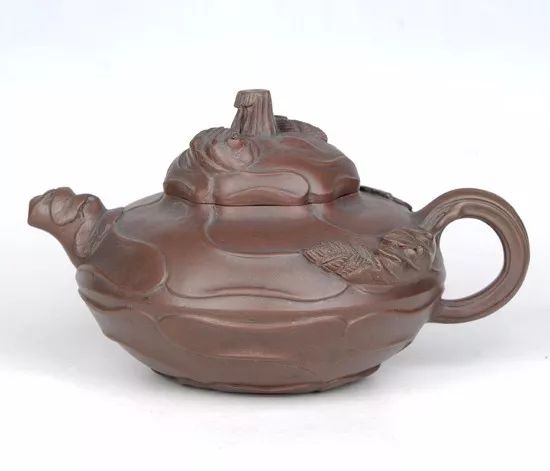
The finished product clearly feels like sand, and the double porous structure ensures rapid temperature transfer and excellent heat retention. When brewing tea, it is important to maintain a constant water temperature, as this directly affects the color and taste of the tea. The Yixing teapot made of this clay copes with this perfectly.
Qing Shui Ni clay (Chinese: 清水泥, pinyin: Qīng shuǐní) is not such a unique and refined material as the sky-blue Tian Qing Ni clay (Chinese: 天青泥, pinyin: Tiān qīng ní), however, it is filled with antiquity and laconicism. A teapot made of this clay after long use becomes like a century-old tree and is especially revered by connoisseurs for its simplicity and classic look. In Yixing ceramics, this raw material is classified as Pu Ni (Chinese: 普泥, pinyin: pǔ ní), i.e. common, ubiquitous clay.

The properties of clay allow easy control of dryness and humidity during production. In modeling, it is quite stable and easily takes any shape. Before work, clay undergoes additional cleaning to avoid the appearance of unwanted color inclusions.
Features of the product made of this clay: soft and elegant color, the material is good for both large and small works. Teapots made of this clay create a warm and friendly atmosphere for tea drinking, it is not for nothing that it was often used by potters of the early Ming Dynasty.

Over time, the teapot becomes more and more ruddy and acquires an oily shine.
Firing temperature: 1160~1180 °C, mining location: Yixing City (Chinese: 宜兴, pinyin: yíxīng), Huanglong Mountain (Chinese: 黄龙山, pinyin: huánglóng shān).
Di Cao Qing clay (Chinese: 底槽清, pinyin Dǐ cáo qīng) is mined in the Huanglong Mountains (Chinese: 黄龙山, pinyin huánglóng shān).
The rock layers extracted in the upper, central and lower layers have different compositions. This type of clay is from the very bottom layer, so it has a slightly unpleasant name, which means "pallet" or "lower cut".

Since this clay is formed at the bottom of the mine, its texture is quite uniform, the quality of the material is excellent, the color is stable. The largest well No. 4 collapsed and was closed. Now there is a shortage of this raw material, so products made from it are becoming increasingly valuable.
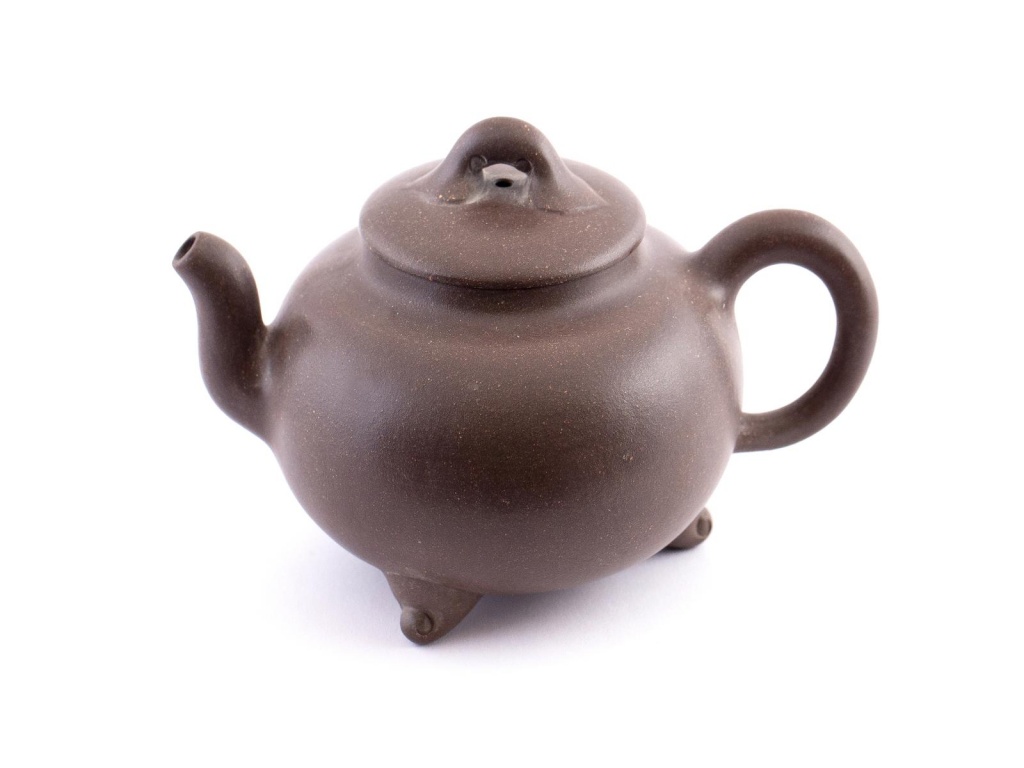
Blue-green spots, commonly known as "chicken eyes" or "cat's eyes," can be seen in the clay lumps, and violet-blue inclusions are also occasionally encountered. The finished product is usually dark red (the Chinese call it "pig's liver color"), but this can vary depending on the mineral composition of the clay and the firing temperature.
Purple clay Putong Zi Ni (Chinese: 普通紫泥, pinyin: Pǔtōng zǐ ní) is the most widely distributed on the market. It is coarse-grained, has a high iron content, and its structure is loose and porous, which ensures good thermal conductivity. This clay is the best teaching material, often used by novice craftsmen.
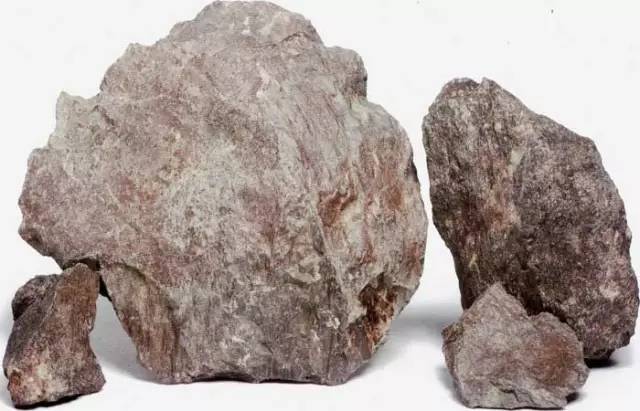
Putong Zini is stable, easy to shape, and easy to adjust as you work. This clay is often used to make large, intricate teapots.

The color of Putong Zi Ni is mature and durable, brown-purple tones soothe the soul and attract attention. It looks great in products of any size.
Green clays (绿泥, pinyin: Lǜ ní, pang: Lu Ni):
Molu Ni clay (Chinese: 墨绿泥, pinyin: Mòlǜ ní) is very similar to Tian Qing Ni clay (Chinese: 天青泥, pinyin: Tiān qīng ní), so they are often confused, but the former does not have a gray tint, it has a more pronounced green color. Products made from such clay are ideal primarily for brewing Shu Pu-erh and other highly fermented teas.

Molu Ni clay has a fine structure, good viscosity and unique color, but has high requirements for the firing temperature. If the kiln temperature is sufficient, the color will be rich and warm, and if the kiln temperature is insufficient, the color will be too pale and the finished product will be fragile.
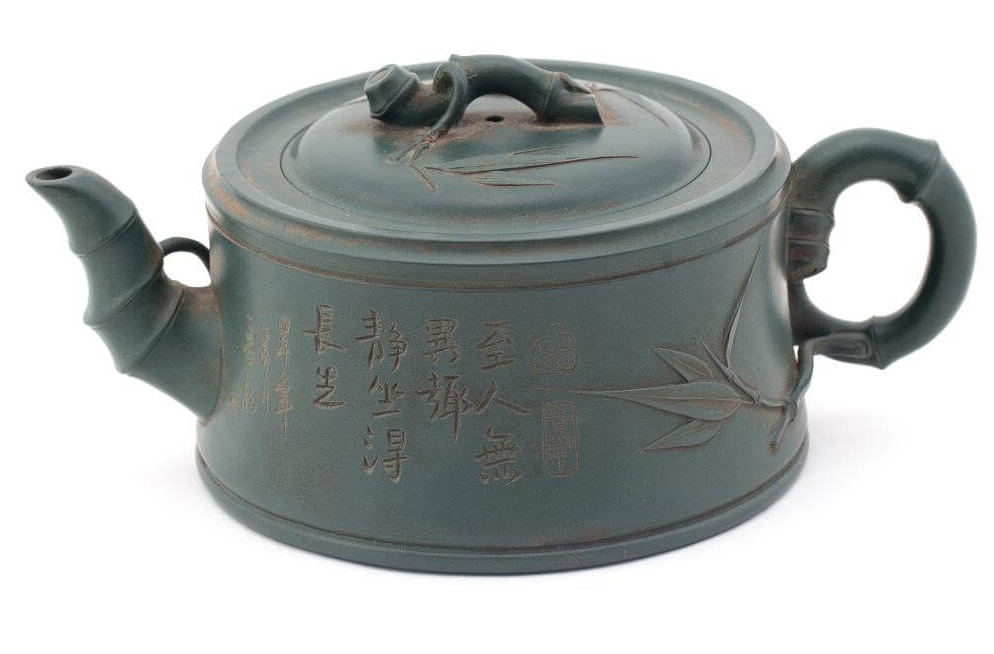
Features: has a unique blue hue with a greenish tint. During the use of the teapot, the color gains depth and becomes more noble and refined.
Benshan Lu Ni green clay (Chinese: 本山绿泥, pinyin: Běnshān lǜ ní) is mined in the Huanglong Mountains (Chinese: 黄龙山, pinyin: huánglóng shān).
This type of clay is further divided into subtypes:
- Duan Ni (Chinese: 段泥, pinyin: Duàn ní);
- Bai Mazi Ni (Chinese: 白麻子泥, pinyin bái mázǐ ní);
- Hong Mazi Ni (Chinese: 红麻子泥, pinyin hóng mázǐ ní);
- Tuan Shan Ni (Chinese: 团山泥, pinyin tuán shān ní), etc.
The material belongs to sandy argillites that are located between layers of purple clay. The extraction of this type of clay is quite small, which makes this material especially valuable.

The clay has a dense structure with a relatively low mineral content and large grain size. Benshan Lu Ni green clay has a small degree of shrinkage and deformation. Very high requirements are imposed on the firing temperature, usually from 1200 ° C to 1230 ° C, and sometimes above 1250 ° C.
Features: The original ore has a color from dirty white, sometimes yellow to greenish, grayish-yellow. After firing, the product becomes bluish-gray, so if the master shows the original green color of the clay, which remains green when firing the color, then this is a pigment.
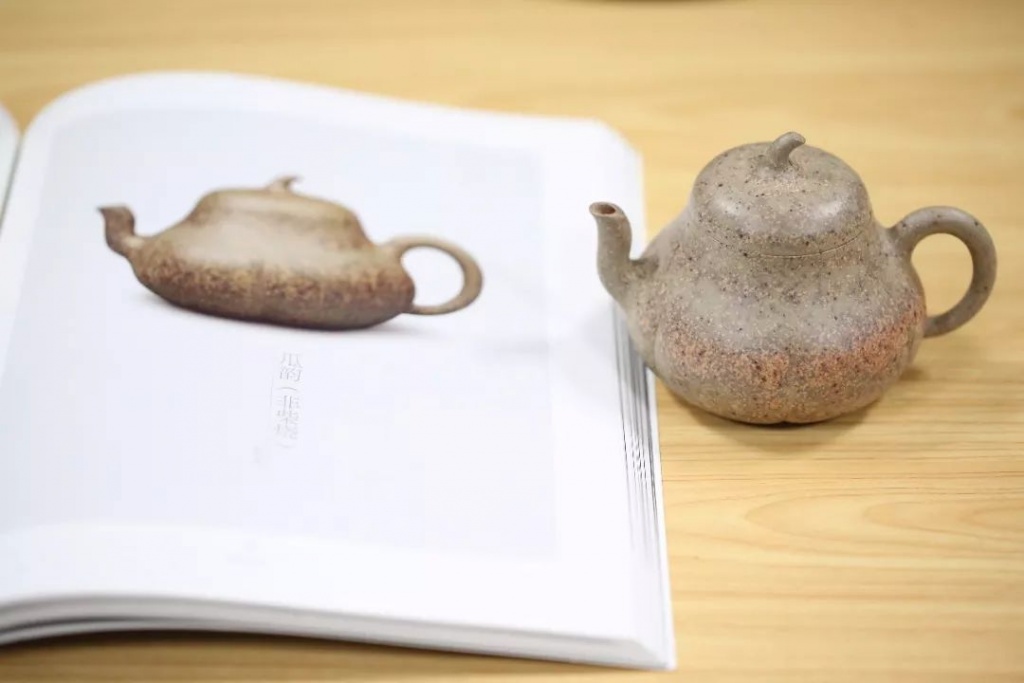
Tea brewed in Benshan Lu Ni clay teapots (Chinese: 本山绿泥, pinyin: Běnshān lǜ ní) is soft and balanced.
Zhima Lu Ni (Chinese: 芝麻绿泥, pinyin: Zhīma lǜ ní) or Sesame Green Clay.
The original rock has a grayish-blue appearance, and is represented by small, dense pieces with traces of light brown and white coating in the cross-section. The material has a coarse-grained structure, and after firing, green spots appear on the surface of the product, which is why the clay is called "sesame green clay". After firing, the product acquires a light yellow and slightly greenish color.
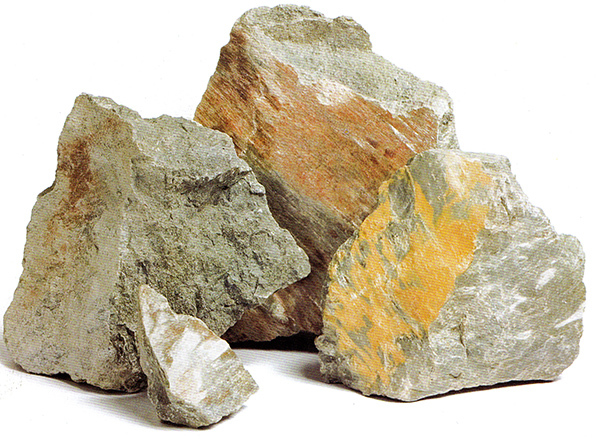
This type of clay has poor plasticity, but a small degree of shrinkage - about 5.5%, which reduces the percentage of defective finished products.
Puer tea, Tie Guan Yin, and dark oolong teas are best brewed in teapots made from Sesame green clay.

Red clay (Hong Ni 红泥, pinyin Hóng ní, pall. Hong Ni)
Red Dragon Skin Hong Pi Long Ni (Chinese: 红皮龙泥, pinyin: Hóng pí lóng ní) , also known as Yeshan Hong Ni (Chinese: 野山红泥, pinyin: Yěshān hóng ní) "Red Clay from the Wild Mountains", has become less common on the market in recent years due to the shortage of deposits. This clay is usually found under a layer of yellow stone, has a reddish-brown color, which turns red after firing.

It has a higher quartz content, a large amount of mica impurities and good air permeability. After long-term use, ceramics become more saturated in color with an oily sheen.

High shrinkage and sand inclusions often result in deformation and cracks when firing products.
Product features : rough surface, covered with red sand particles, porous structure provides good air permeability.
Finished ceramics easily change color under the influence of temperature.
This is the most perfect clay, which is on the verge of extinction, has a dazzling red color and attracts the eye, carries an atmosphere of happiness and celebration.

Properties of clay: low stretch, shrinkage coefficient is almost three times higher than purple clays. It is not easy for potters to master and learn to work with such clay. In ancient times, it was used to add magnificent red tones to other materials. The most mysterious legends are about this clay.
The difficulty of use is due to the fact that it easily cracks, breaks down, deforms, in most cases a yellowish color appears, sometimes bubbles form and the proportion of finished defective product is less than 20%.

Features: dense texture, strong and heavy rock, bright rich color, almost smooth structure, changes color to a more saturated color with a purple tint and a “vintage touch” under the influence of temperature.
This rock was first mined in the Er Long Qiao Kuang (Chinese: 二龙桥矿, pinyin: èr lóng qiáo kuàng) mine area of Huanglong Mountain, which was located at the junction of Qinglong Mountain and Huanglong Mountain. The road from Ding Shan (Chinese: 丁山, pinyin: dīng shān) to Yixing (Chinese: 宜兴, pinyin: yíxīng) subsided due to quarrying, exposing a layer of this rock, which is why the potters of Yixing named it this way.
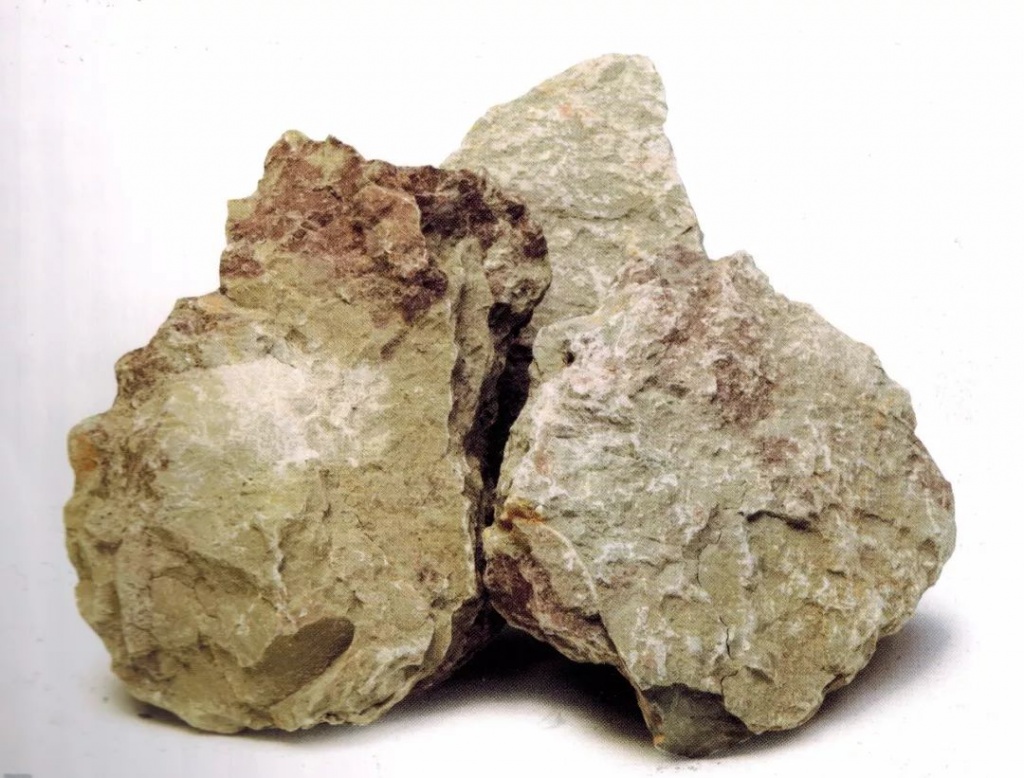
After cleaning, the clay acquires an old-fashioned orange-red yellowish color, and when fired, it has the ancient appearance of products created in the Ming and Qing dynasties.
Properties of clay: Cast and purified clay has good plasticity, slightly crumbles when molded, normal firing temperature. Difficulty of use is associated with large shrinkage and deformation, often used only for sketches.
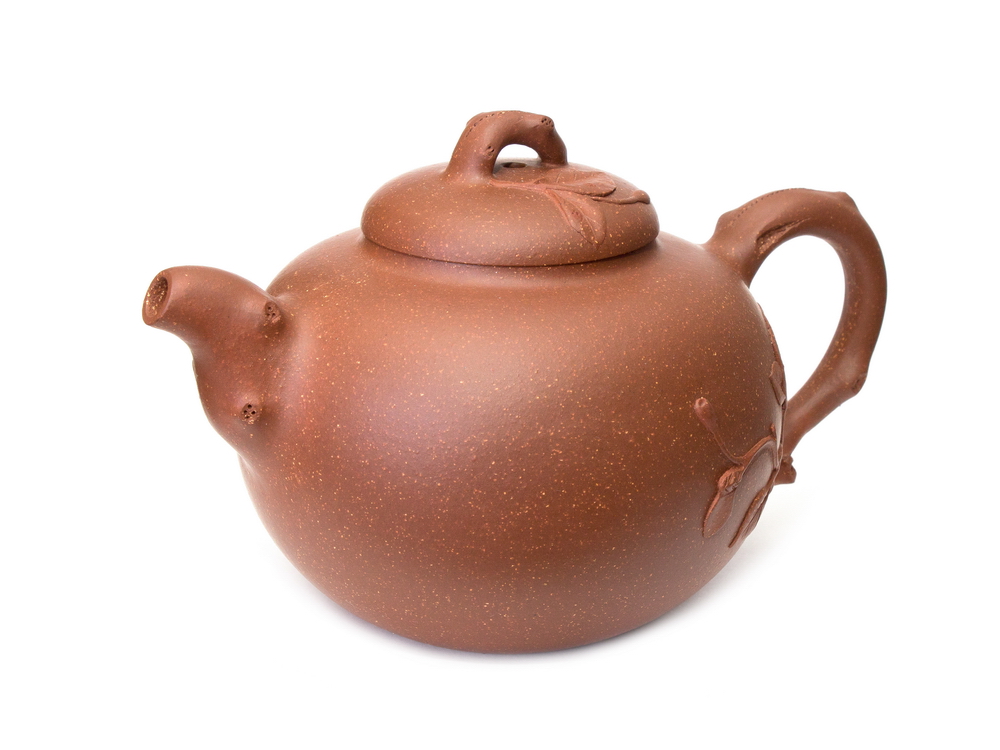
Since the original rock contains different colors of clay and many paragenetic minerals, after firing, small red and yellow spots appear on the product.
This is the best of the red clays.
In turn, at least 3 subspecies are distinguished:
1. Hongzhong Zhonglue Liuedai (Chinese: 红中略带黄, pinyin Hóngzhōng zhōnglüè lüèdài) - red with a yellow tint;
2. Huangzhong Zhonglue Luedai Hong (Chinese: 黄中略带红, pinyin: Huángzhōng zhōnglüè lüèdài hóng) – yellow with a red tint;
3. Hongzhong Zhonglue Liuedai Zi (Chinese: 红中略带紫, pinyin: hóngzhōng zhōnglüè lüèdài zǐ) - red with a purple tint or high-temperature Zhu Ni (Chinese: 朱泥, pinyin: Zhū ní). They have a common characteristic - an increased iron content. This clay is mined in the lower layer of the rock, which is called Wei Chu Feng Yue Zhi (Chinese: 未触风曰之石骨, pinyin: wèi chù fēng yuē zhī) rock not affected by the wind. The color of the rock is coffee-black.
Due to the low sand content, the clay is very soft and difficult to shape. From raw material to firing, the shrinkage rate reaches 30-40%. They mainly make small teapots. The firing temperature is 1000-1040 degrees.

Changes color at high temperature, becomes more saturated with long-term use.

This clay has a relatively high iron oxide content, and the better quality clay has a brighter, more orange and slightly red color. Lower quality clay is grassy green.
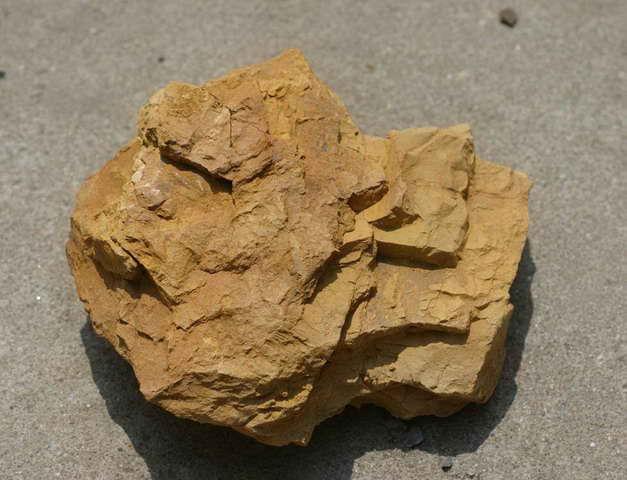
The clay features: low firing temperature, large shrinkage coefficient, relatively high quartz and mica content.
Making teapots from this clay is complicated by its high sensitivity to firing temperature. If the temperature is insufficient, the color of the products will be pale yellowish-orange; if the temperature is too high, the ceramics will shrink greatly, even to the point of deformation and destruction of the product. Only at the right temperature (1172~1180° C) can you get a beautiful bright red teapot with an orange tint.

When brewing tea, the teapot changes color dramatically upon contact with hot water, which amazes beginners.
Duan Ni clay is also called "Old Tuan clay", it is light in color with dark green and brown spots. The clay contains large particles, has a loose porous structure with good air permeability. It is mined in the Zhu Ni Kuan mine (Chinese: 朱泥矿, pinyin: zhū ní kuàng) in Yixing. Since the iron content is only about 6%, ceramics made from this rock are called "Yellow-gold field".

When using a low kiln temperature (less than 1172 ~ 1180 ° C), after firing the product and contacting with water, its color returns to the original color of the rock, this phenomenon is called "Black Spit" (Chinese: 吐黑, pinyin: tù hēi, pall. Tu Hei).
The shrinkage coefficient of products is about 12%.

There are two main ways to distinguish a teapot made of Duan Ni clay:
1. By the feeling of sand impurity to the touch. After firing at a sufficiently high temperature, the Duan Ni clay teapot will feel grainy to the touch, each grain of sand will be palpable.
2. In appearance. The Duan Ni clay teapot has a rich oily luster that is clearly visible and distinguishes the genuine product from other Yixing teapots.
- Comments
- Vkontakte




